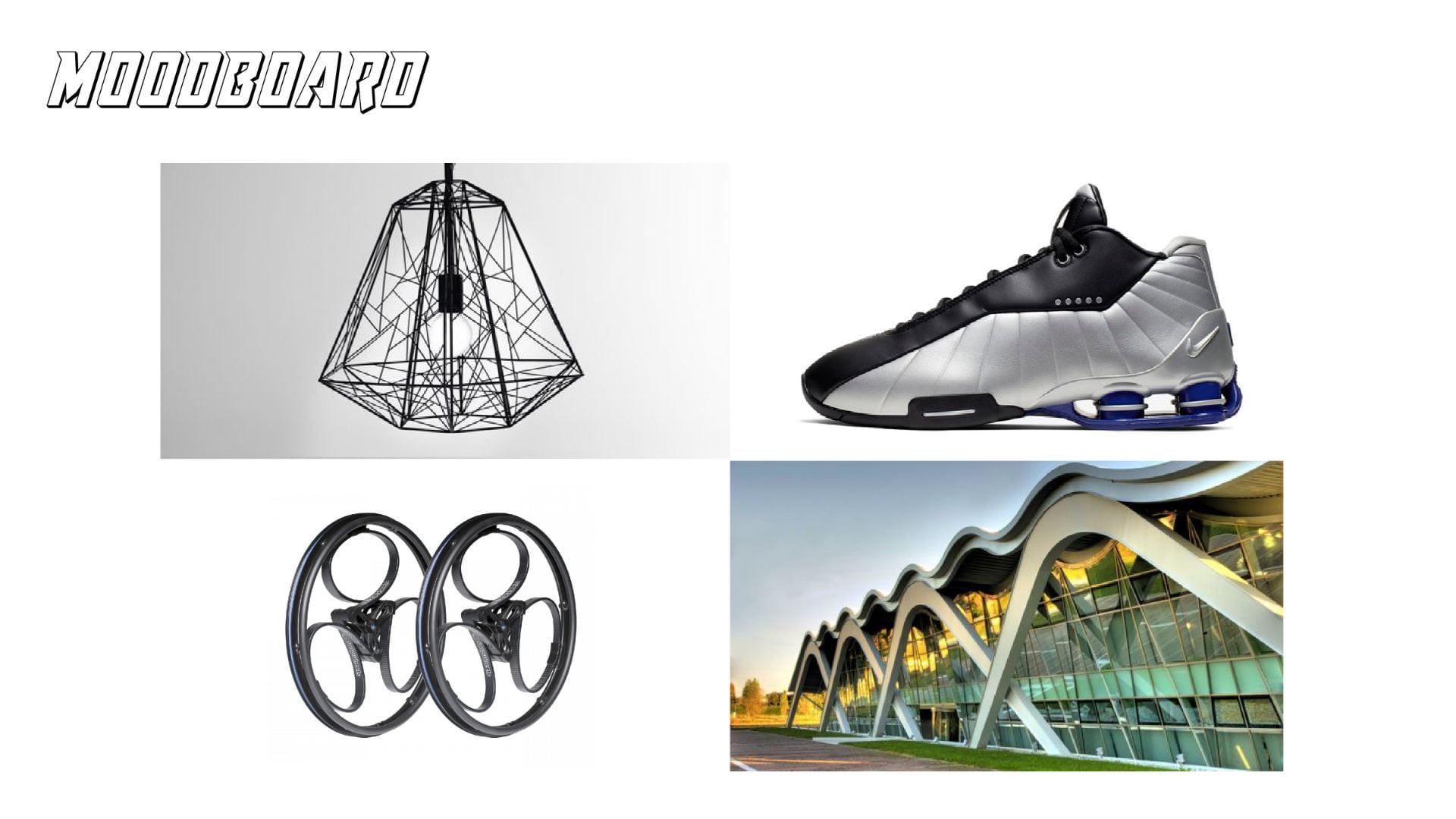Month: April 2020
Project 2.7: Last Taping and Basic Shell Pattern Development
Project 2.6 Rule Breaker Footwear Upper Design
Project 2.5 Basic Footwear Upper Making
Project 2.1 Footwear Upper Reasearch
BACKGROUND RESEARCH
Heel counter is an important part of a pair of basketball shoes. It started as an internal piece in the heel of the upper to provide better stability around the heel and Achilles. It also would help keep the collar of the shoe from dropping down, reinforcing it to aid in better fitment around the ankle. Over the years, the heel counter has become an area of heavy design focus as it has become an external piece. They are generally molded out of TPU or directly injected onto the upper with EVA.
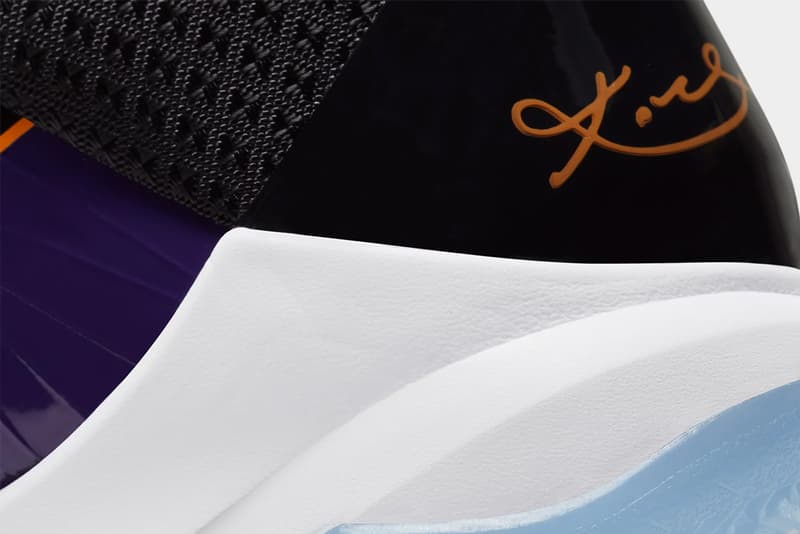
PROBLEM
The less movement at the heel, the better performance. However, due to the stiff material like TPU, heel counter can not provide adjustable fit around heel, for those players with narrow heels may not have snug fit for their heels, which will cause feet slippage during an intensive game.
BIOMECHANICAL STUDY
Based on the biomechanical study of Collar height and heel counter-stiffness for ankle stability and athletic performance in basketball, 15 university basketball players wore customized shoes with different collar heights (high and low) and heel counter-stiffness (regular, stiffer and stiffest) for this study. Ankle stability was evaluated in sidestep cutting while athletic performance evaluated in jumping and agility tasks. Results showed that the collar height might play a larger role in lateral stability than heel counter-stiffness, while both collar height and counter-stiffness have no effect on athletic performance.


OBJECTIVE
My goal is to develop a new basketball shoe upper construction with adjustable heel fit to provide better lockdown around the heel and prevent foot slippage.
PRIOR ART & PATENT
1. Nike FastFit Technology
It is a manual system that instantly secures the entire foot. How it works:
- Loops on the tongue and heel allow easier entry
- The tightening system (which is contained at the instep) activates its cables with a single tug of a forefoot strap, creating a full 360-lockdown from heel to ankle to forefoot
- Eject by pulling the side loops to release the cables


The Fastfit of Air Jordan 33 SE is linked to heelpiece, so it can fit well with heelpiece. Although it’s not high type, but it can fit well with the foot.

2. Adidas Hugs Systems
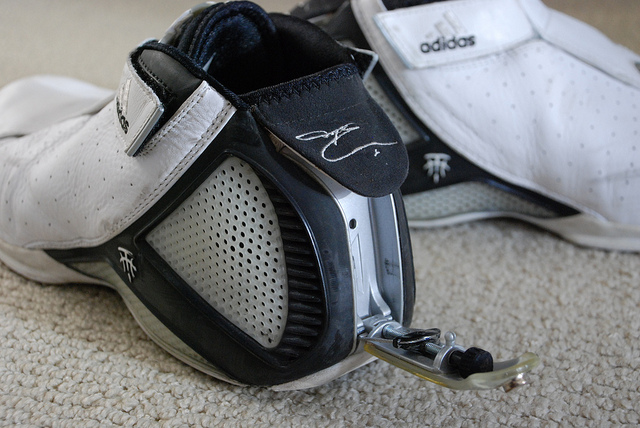
Hug is a laceless compression closure system that, with the flip of a lever, locks your foot into a zone of total comfort, security and control. The inspiration behind Hug comes from the High-Tech Downhill Ski Boots.
It features a revolutionary closure system that locks the foot securely in place, providing superior comfort and fit. The Hug element fits over the top area of the foot. This is attached to the rear of the shoe by cables which put the element under tension, which is maintained by a closure device on the heel counter. The closure device, a slider/ lever system is used to control the fit. Turning the adjustment wheel moves the slider up and down on the thread, giving the athlete the most precise fit possible.
However, it was hard to get a secure enough lockdown with the system, and the extra materials in the heel created balance issues.
3. Nike FlyEase Technology
FlyEase technology works with a magnetized heel that folds down and connects to the midsole, opening up the back of the shoe so you can slide your foot in without hands.
Articulated strap is connected to Flywire cables that lock the upper down over your foot with one upward pull. Then it wraps entirely around the heel and fastens securely, giving you a custom fit that locks you in.

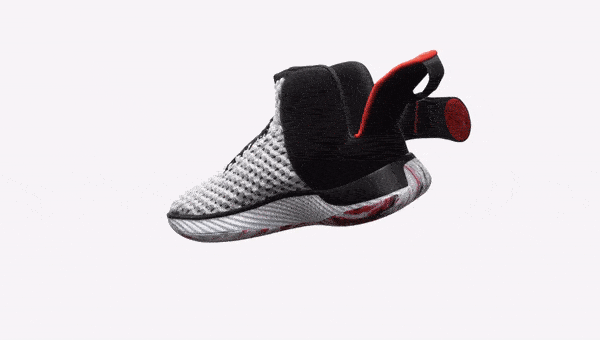
4. Wraparound Lacing System
The lacing system includes a lace which encircles the housing of the article of footwear in a spiral, helical, coiled or similar wound wraparound pattern. The housing includes finger members which independently adjust to the contours of the wearer’s foot while providing a snug and secure fit.
Other Patents
5. US5755044A
6. US20030204938A1
7. US7082701B2
PAPER SEARCH
1.Valenzuela, J. P. (2019, September 6). How to Prevent Shoes from Slipping Off – Let’s Prevent Heel Slippage! Retrieved from https://comfortablewomenshoes.com/how-to-prevent-shoes-from-slipping-off-lets-prevent-heel-slippage
2. Liu, H., Wu, Z., & Lam, W.-K. (2017). Collar height and heel counter-stiffness for ankle stability and athletic performance in basketball. Research in Sports Medicine, 25(2), 209–218. doi: 10.1080/15438627.2017.1282352
3. Explaining Nike FastFit. (2018, September 20). Retrieved from https://news.nike.com/news/what-is-nike-fastfit
4. Sole Collector. (2016, October 20). Here and Gone Sneaker Technology. Retrieved from https://solecollector.com/news/2014/02/here-and-gone-sneaker-technology
Project 1.5 Cushioning System Presentation
Project 1.3 Prototype
Purpose
After egg drop challenge and research about existing suspension soles, I want to develop a new cushion system to optimize the conflicting concerns of shock absorption and stability, while also maximizing comfort and durability.
Inspiration
I got inspiration from a reinvented bicycle tire called loopwheel. Loopwheel is a wheel with integral suspension, designed to reduce vibration and increase performance and provide greater comfort for bicycle or wheelchair.
How does it work?
IDEATION
PATENT DRAWING
This new suspension cushion system is consist of suspension pebax midsole and carbon fiber spring. Hollowed pebax midsole is lightweight and provides enough cushion while carbon spring gives optimum compression and lateral stability as well as strength and durability for extra propulsion.
Type B Sketches Render
Project 1.2 Cushion Research
Background Search
Cushioning is one of the most important aspects of athletic shoes. Whether it’s delivered by pressurized air channels, sturdy foam compounds, or other, more unique constructions, almost all performance footwear has some sort of cushioning implementation. Every now and then, a brand will buck the tradition and try out something a little more unusual.
Suspension soles are supportive midsoles/outsoles that, unlike traditional setups, make use of negative space to achieve cushioning and forward propulsion. Similar to the function of cables on a suspension bridge, these unconventional soles help to absorb shock through varying gaps of space throughout the platform. Unlike air chambers, these designs feature completely empty spaces, allowing outside air to pass through freely. It can be a tricky design to integrate, and brands such as adidas are still working to perfect the concept today.
Problem
The footwear industry has been developing athletic shoes in an effort to maximize shock absorption and stability while also maximizing comfort and durability. Unfortunately, these goals are potentially in conflict with each other. For example, a shoe that provides adequate shock absorption and comfort may not provide sufficient stability. To further advance the development of athletic shoes, a basic understanding of the dynamics of running and the mechanisms of running injuries is important.
Object
1. To provide an athletic shoe that optimizes the conflicting concerns of shock absorption and stability, while also maximizing comfort and durability.
2. To provide an athletic shoe sole that adopts a mechanical suspension cushioning system to have differential cushioning properties at different regions of the sole.
Prior Art
1. Nike Shox
Year released: 2000
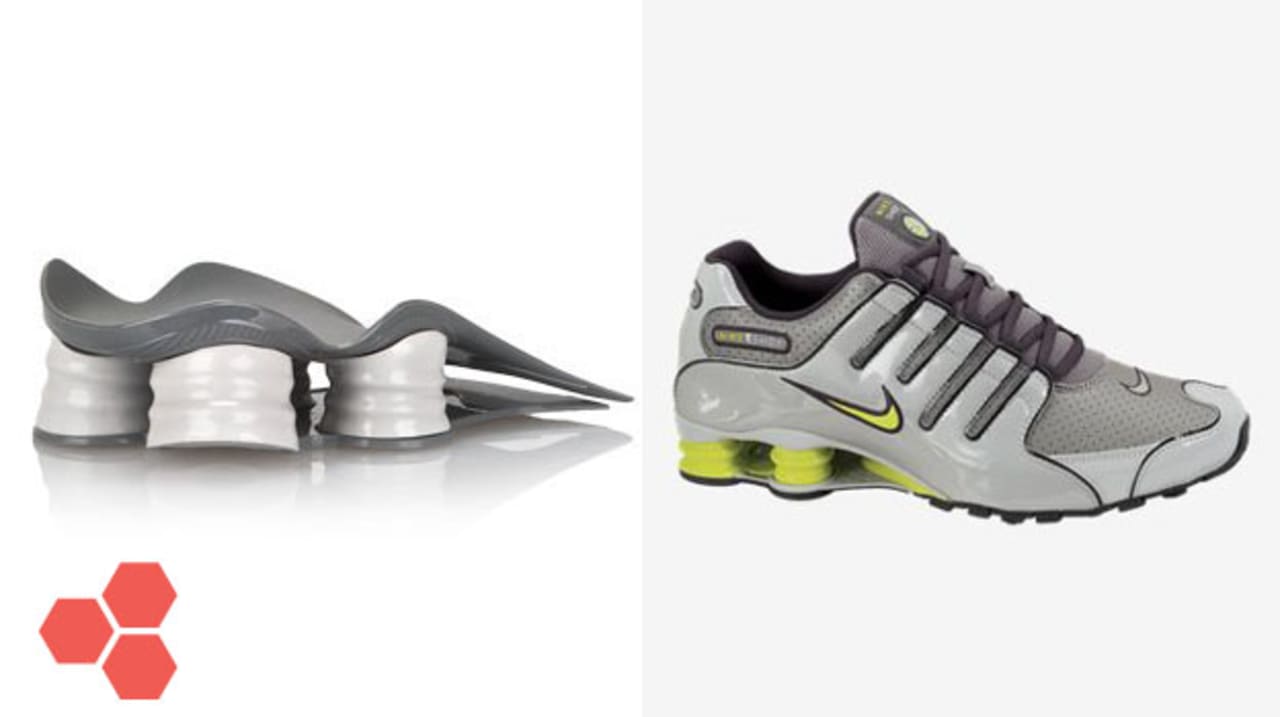

Shox is a shoe feature first released by Nike in 2000 that is incorporated in several of their flagship athletic sports shoes. The history of the Nike Shox goes all the way back to 1984 when Bruce Kilgore, the man who had designed the Air Force 1 just two years prior, had the idea to put mechanical cushioning on a pair of running shoes. This prototype looked nothing like Shox in their current form, but rather like a suspension fork for a mountain bike, but for feet. The idea would finally come to fruition in 2000, thanks to Nike designers Aaron Cooper, Greg Thompson, and Brian Farris, and become one of the most polarizing technologies of the decade.
The shoe design includes a support system feature, which is an arrangement of small hollow columns in the midsole supporting the shoe’s heel, which are made primarily with polyurethane. There are different formations of the shox technology, but most models include four circular columns in a square formation to provide cushioning. Later variations in shox models added one or two additional shox, 25 mm high, though they may vary in height; as well as triangular and rectangular shox that Nike claims provide better stability. Some shoes have midsoles made entirely of Shox, like the TL series.
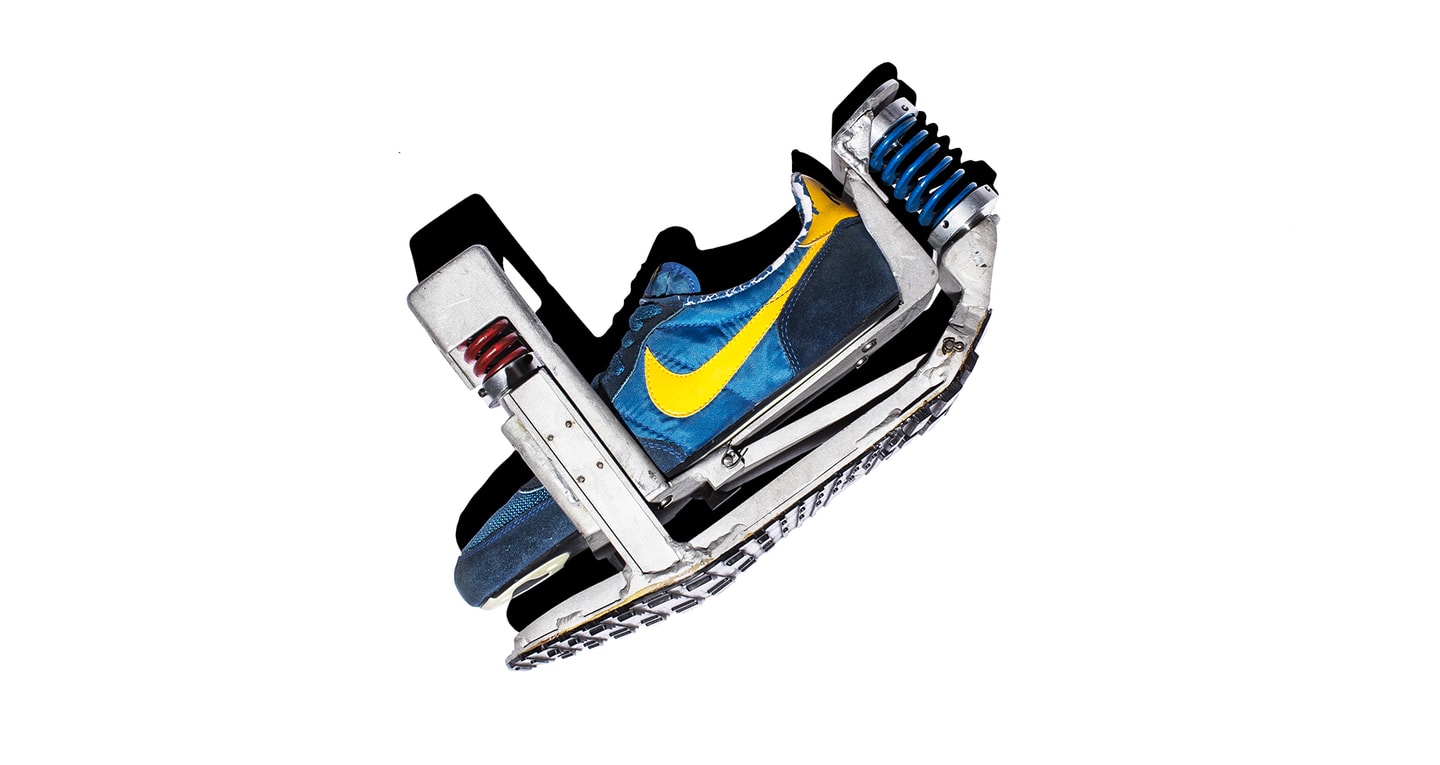
2. Adidas A3
Year released: 2006
Featured in the a3 Microride, adidas a3 tech was relatively short lived, but served as the Three Sripes’ blueprint for several models that would follow in the coming years. Featuring a full-length midsole composed of gaps and hollowed TPU spheres, this concept would be revisited with adidas Bounce technology.
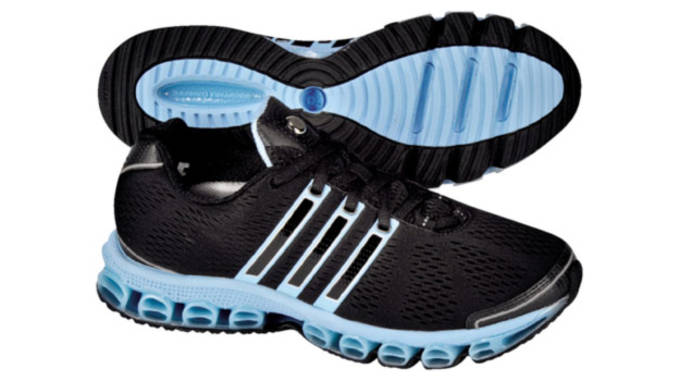

3. Reebok Zig
Year released: 2010
Reebok Zig is an athletic footwear technology and collection of shoes designed by Reebok. ZigTech debuted in January 2010 and was first introduced with the ZigPulse later that year. ZigTech includes a zigzag foam sole that is designed to push athletes forward. The design assists in energy return to the wearer by absorbing impact at the heel and dispersing the energy through the zigzag composition which propels the athlete forward and also reduces stress on the shins. Reebok has released various styles of ZigTech designs that are compatible across a variety of sports.
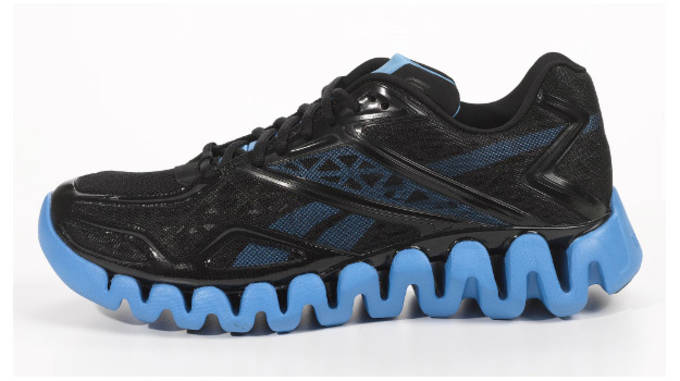

4. Mizuno Wave
Year released: 2011
Mizuno’s Wave technology took negative space to the extreme, with large gaps inspired by the motion of oceanic waves and tidal waves. Due to its very minimal construction, it’s also one of the lightest soles around.
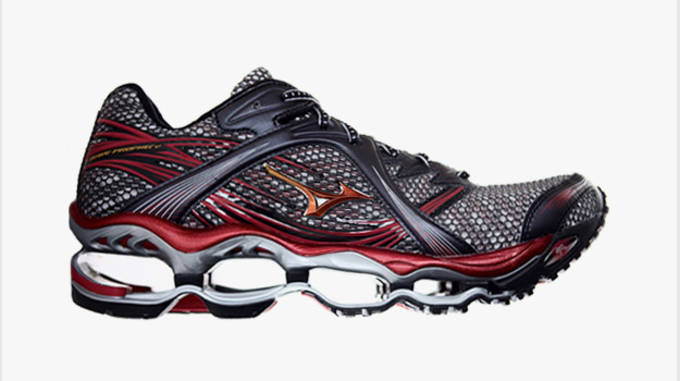

Patent Search
other Suspension soles’ patent
1. US20060042120A1
Inventor: Susan Sokolowski, Susanne Wolf-Hochdoerffer, Lorrie Vogel
2.USD511618S1
Inventor: Sean Michael McDowellEric P. AvarSusan CessorAndrew EsteyMaria J. KozoSteven F. SmithRobert W. DolanTate E. KuerbisJean-Francois Fullum
3.US9192211B2
Inventor: Mario A. Lafortune
4.US5797199A
Inventor: Todd MillerCraig, FellerDaniel, Wickemeyer, David Potter, Erik Purdom, Tuan Le
5.USD532598S1
Inventor: Marya L. Chan
Paper Search
- Jones, R. (2018, June 1). A Complete History of Suspension Soled Sneakers. Retrieved from https://www.complex.com/sneakers/2014/01/history-suspension-soles
- Aguinaldo, A., & Mahar, A. (2003). Impact Loading in Running Shoes with Cushioning Column Systems. Journal of Applied Biomechanics, 19(4), 353–360. doi: 10.1123/jab.19.4.353
- Goonetilleke, R. S. (1999). Footwear Cushioning: Relating Objective and Subjective Measurements. Human Factors: The Journal of the Human Factors and Ergonomics Society, 41(2), 241–256. doi: 10.1518/001872099779591231
- Delattre, N., Cariou, A., Guéguen, N., & Baudry, P. (2015). Test methods and observed parameters for the mechanical characterization of footwear cushioning. Footwear Science, 7(sup1). doi: 10.1080/19424280.2015.1038318
- Lafortune, M., & Hennig, E. (1992). Cushioning properties of footwear during walking: accelerometer and force platform measurements. Clinical Biomechanics, 7(3), 181–184. doi: 10.1016/0268-0033(92)90034-2























